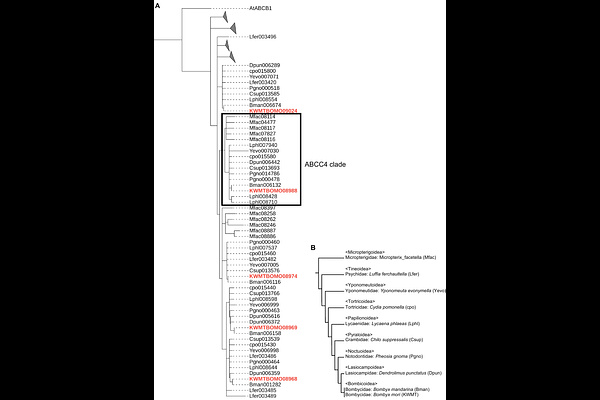An ATP-binding cassette subfamily C is crucial for flavonoid sequestration in the domestic silkworm, Bombyx mori

An ATP-binding cassette subfamily C is crucial for flavonoid sequestration in the domestic silkworm, Bombyx mori
Waizumi, R.; Hirayama, C.; Watanabe, K.; Iizuka, T.; Takasu, Y.; Sezutsu, H.
AbstractSome herbivorous insects have evolved sequestration mechanisms, the ability to take up and accumulate plant secondary metabolites for their own benefit. The domestic silkworm, Bombyx mori, and its wild ancestor, B. mandarina, take up flavonoids from mulberry leaves and accumulate the molecules as their glucosides in their tissues and cocoon shell. This sequestration enhances the cocoon\'s protective property against ultraviolet or bacterial proliferation. Here, we show that an ATP-binding cassette transporter subfamily C (ABCC) gene, BmABCC4, plays a crucial role in the flavonoid sequestration in the silkworms. BmABCC4 is located at Green c, a cocoon color-associated locus predicted in 1941 and whose detailed position we previously identified. This transporter is expressed in the midgut and silk glands, and the expression is upregulated in the midgut in late period of final instar larva. Knockout of BmABCC4 significantly reduced the total flavonoid content in the tissues and cocoon shell. Our results suggest that BmABCC4 transports flavonoid glucosides from the midgut cells to hemolymph and from the silk gland cells to the silk gland lumen.